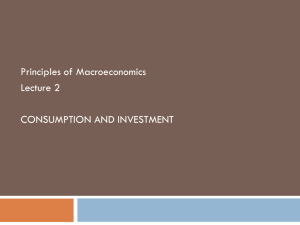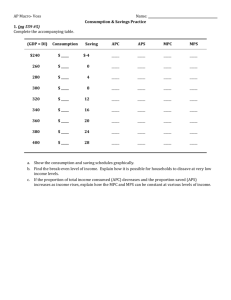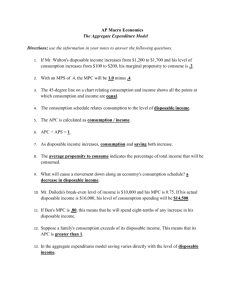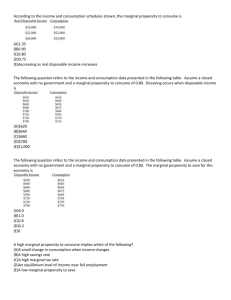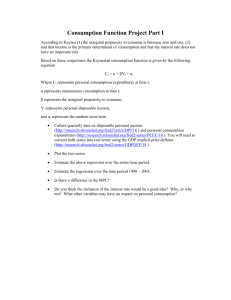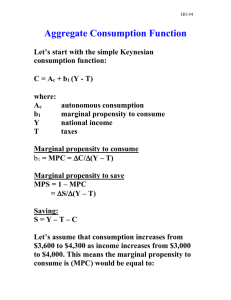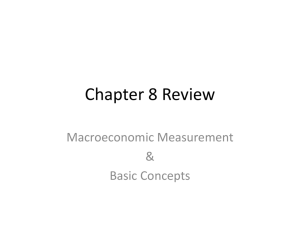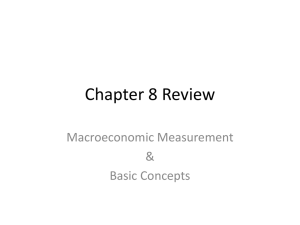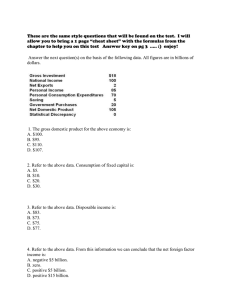Revision on Ch. 27. Tessa's break-even income is $10,000 and her
advertisement
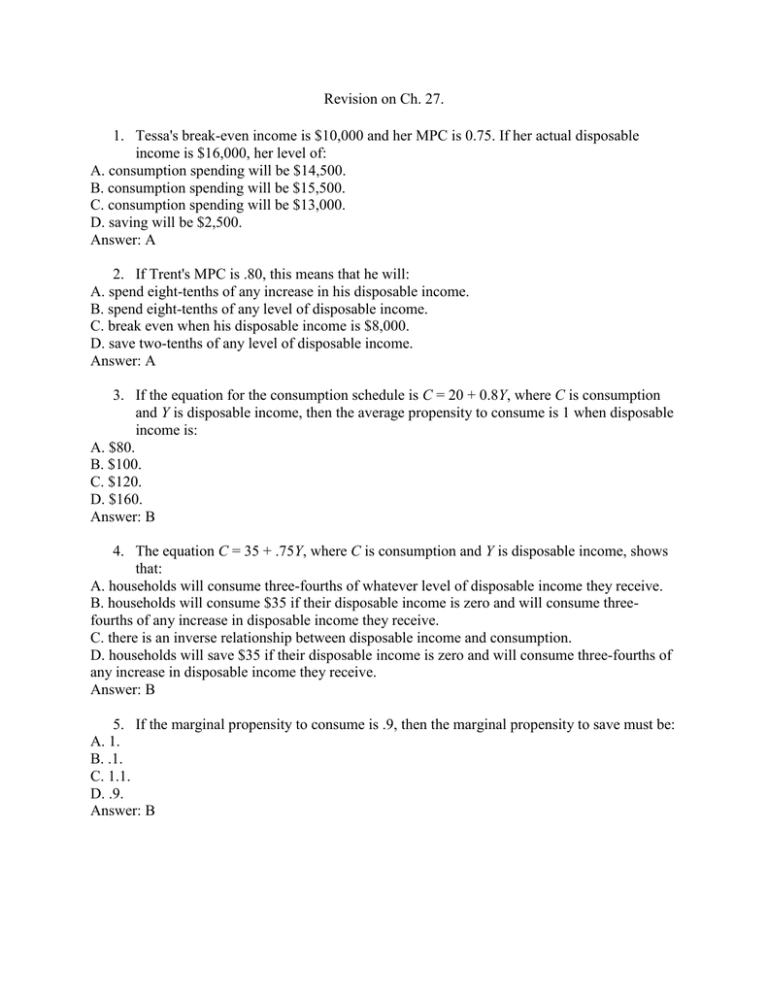
Revision on Ch. 27. 1. Tessa's break-even income is $10,000 and her MPC is 0.75. If her actual disposable income is $16,000, her level of: A. consumption spending will be $14,500. B. consumption spending will be $15,500. C. consumption spending will be $13,000. D. saving will be $2,500. Answer: A 2. If Trent's MPC is .80, this means that he will: A. spend eight-tenths of any increase in his disposable income. B. spend eight-tenths of any level of disposable income. C. break even when his disposable income is $8,000. D. save two-tenths of any level of disposable income. Answer: A 3. If the equation for the consumption schedule is C = 20 + 0.8Y, where C is consumption and Y is disposable income, then the average propensity to consume is 1 when disposable income is: A. $80. B. $100. C. $120. D. $160. Answer: B 4. The equation C = 35 + .75Y, where C is consumption and Y is disposable income, shows that: A. households will consume three-fourths of whatever level of disposable income they receive. B. households will consume $35 if their disposable income is zero and will consume threefourths of any increase in disposable income they receive. C. there is an inverse relationship between disposable income and consumption. D. households will save $35 if their disposable income is zero and will consume three-fourths of any increase in disposable income they receive. Answer: B 5. If the marginal propensity to consume is .9, then the marginal propensity to save must be: A. 1. B. .1. C. 1.1. D. .9. Answer: B 6. Refer to the above data. The marginal propensity to consume is: A. .25. B. .75. C. .20. D. .80. Answer: D 7. Refer to the above data. At the $200 level of disposable income: A. the marginal propensity to save is 2½ percent. B. dissaving is $5. C. the average propensity to save is .20. D. the average propensity to consume is .80. Answer: B 8. Refer to the above data. If disposable income was $325, we would expect consumption to be: A. $315. B. $305. C. $20. D. $290. Answer: B 9. The above figure suggests that: A. consumption would be $60 billion even if income were zero. B. saving is zero at the $120 billion income level. C. as income increases, consumption decreases as a percentage of income. D. as income increases, consumption decreases absolutely. Answer: C 10. Refer to the above figure. If the relevant saving schedule were constructed: A. saving would be minus $20 billion at the zero level of income. B. aggregate saving would be $60 at the $60 billion level of income. C. its slope would be 1/2. D. it would slope downward and to the right. Answer: A 11. If the MPS is only half as large as the MPC, the multiplier is: A. 2. B. 3. C. 4. D. 5. Answer: B 12. If the MPC is .70 and investment increases by $3 billion, the equilibrium GDP will: A. increase by $10 billion. B. increase by $2.10 billion. C. decrease by $4.29 billion. D. increase by $4.29 billion. Answer: A 13. Refer to the above table. The marginal propensity to consume is: A. .5. B. .75. C. .8. D. .9. Answer: C 14. Refer to the above table. The marginal propensity to save is: A. .5. B. .25. C. .2. D. .1. Answer: C 15. Refer to the above table. The change in income in round two will be: A. $4. B. $16. C. $20. D. $24. Answer: B 16. Refer to the above table. The total change in income resulting from the initial change in investment will be: A. $100. B. $20. C. $80. D. $200. Answer: A
